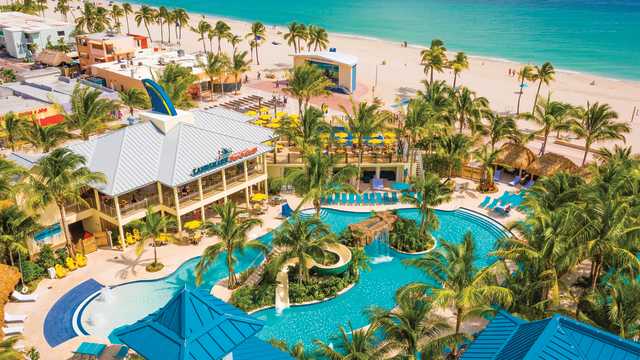Fishing for wahoo and catching lobsters highlight the things to do in Fort Lauderdale and beyond during July for anglers and scuba divers.
Among the fastest, tastiest fish in the ocean, wahoo is caught year-round in South Florida, but one of the absolute best times to land a trophy wahoo for boats fishing off Pompano Beach and Fort Lauderdale is during the week of the full moon in July, which this year is July 13.
Lobster divers flock to the coral reefs off Greater Fort Lauderdale at the end of the month for the annual two-day lobster miniseason on July 27 and 28.
The miniseason is the first opportunity for recreational divers to catch lobsters since the regular and commercial seasons closed on April 1. The regular recreational season and the commercial season open on August 6.
Making the miniseason extra attractive for local divers is the daily bag limit is 12 lobsters per person, which is twice the regular-season limit of six lobsters per day. To accommodate everybody, Greater Fort Lauderdale dive charters often run several trips per day during miniseason, including some that will start at 12:01 a.m. on July 27, when divers can get the first crack at lobsters.
Saltwater Fishing
The most and biggest wahoo, which are in the same family as kingfish but have a milder flavor, is usually caught three or four days before the July full moon and three or four days after. Instead of the 12 to 25-pound wahoo caught during the winter and spring, summer wahoo ranges from 30 to 60 pounds, with an occasional 70-plus-pounder.
Catching wahoo depends on knowing what the tide is doing, which will help you find where the bait is located. On the last of an incoming tide, when the tide is at its highest, bait will be close to an inlet. On a low tide, baitfish will be around wrecks in 200-400 feet. The bait includes flying fish and ballyhoo, which are chased by bonito. Wahoo eats all three of them.
A favorite bait of Fort Lauderdale fishing charters out of the Port Everglades Inlet and boats fishing out of Hillsboro Inlet in Pompano Beach is a ballyhoo or a strip made from the belly of a bonito rigged with a flashy skirt known as a Sea Witch. Trolling a blue-and-white skirt often gets the most wahoo bites, but the bait and lure combo also catches sailfish, dolphin, tuna, kingfish and bonito. The optimal trolling speed is seven to nine knots.
Freshwater Catches
Afternoon rainstorms are common during the summer, so it’s best to get an early start if you’re fishing for bass in the Everglades canals. One benefit of being on the water as the sun rises is that the air and water temperatures are cooler, which is good for fish and anglers.
The rainfall also increases the water levels in the canals, which allows fish to swim into the marshy interior of the Everglades. But largemouth bass and peacock bass can still be caught fishing topwater plugs and hard jerkbaits along the vegetation lining the canals.
Public boat ramps along Interstate 75 and U.S. Highway 27, west of Greater Fort Lauderdale, provide access to those canals. So does Broward County’s Everglades Holiday Park at the end of Griffin Road and U.S. Highway 27, and Sawgrass Recreation Park, located two miles north of I-75 on U.S. Highway 27. Both rent out aluminum fishing boats.
What to Know Before You Go
Light or non-existent summertime winds can have the Atlantic Ocean barely rippling. The extremely calm conditions are good for both anglers and divers as far as comfort, but fishermen and women prefer some wind to help form weedlines that attract bait fish and dolphin, as well as wahoo, sailfish, and blue marlin.
Just like those fishing in the Everglades, keep an eye on the weather, because afternoon thunderstorms can pop up at any time.
What’s Up Ahead in August
The regular lobster season opens on August 6. Wahoo fishing is still good around the full moon on August 11. More and more dolphin show up around this time and stay here through the fall.
